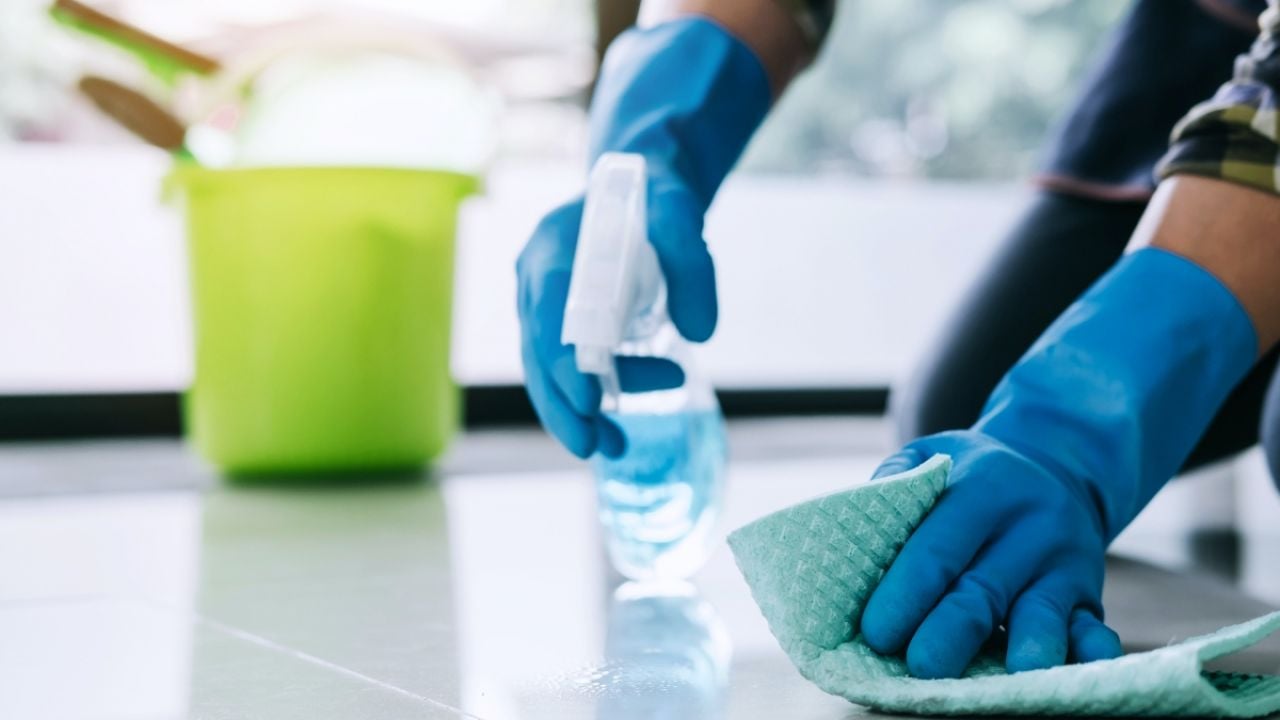
You can combat the novel coronavirus effectively while using products that are safe for you and your family.
EWG screened hundreds of disinfectants and sanitizers approved and recommended by the Environmental Protection Agency and the Centers for Disease Control and Prevention, and checked them against our Guide to Healthy Cleaning. Here’s our list of 16 well-rated products with fewer ingredient concerns. (For details about how we compiled the list, see Methodology.)
| Product |
|
Clorox Commercial Solutions Disinfecting Bio Stain & Odor Remover* |
|
Clorox Pet Solutions Advanced Disinfecting Stain & Odor Remover* |
|
Lysol Hydrogen Peroxide Action Multi-Purpose Cleaner, Oxygen Splash |
|
Lysol Hydrogen Peroxide Bathroom Cleaner, Cool Spring Breeze |
|
Lysol Hydrogen Peroxide Multi-Purpose Cleaner, Citrus Sparkle Zest |
|
Lysol Hydrogen Peroxide Multi-Purpose Cleaning Wipes, Oxygen Splash |
|
Lysol Power Bathroom Cleaner, Island Breeze |
|
Purell Multi Surface Disinfectant, Fragrance Free |
|
Seventh Generation Disinfectant Spray, Eucalyptus, Spearmint & Thyme |
|
Seventh Generation Disinfectant Spray, Fresh Citrus & Thyme |
|
Seventh Generation Disinfectant Spray, Lavender Vanilla & Thyme |
|
Seventh Generation Disinfecting Bathroom Cleaner, Lemongrass Citrus Scent |
|
Seventh Generation Disinfecting Multi-Surface Cleaner, Lemongrass Citrus Scent |
|
Seventh Generation Disinfecting Wipes, Lemongrass Citrus Scent |
|
Windex Multi Surface Disinfectant Cleaner |
|
Windex Multi Surface Disinfectant Cleaner, Glade Rainshower |
[1]Product on EPA’s List N or the American Chemistry Council list. Products on these lists either comply with the EPA’s emerging viral pathogen guidance, with demonstrated efficacy against viruses harder to kill than SARS-CoV-2, or have demonstrated efficacy against another human coronavirus similar to SARS-CoV-2 .
Can’t Find These Products? What To Do Instead
Look on the label of EPA-registered products for these safer active ingredients, which are lower in toxicity compared to others.
- Hydrogen peroxide
- Ethyl alcohol (ethanol)
- Citric acid
- L-lactic acid
- Caprylic acid (octanoic acid)
- Thymol
If products with these active ingredients are unavailable, try:
- Three percent household-strength hydrogen peroxide. Never mix hydrogen peroxide with vinegar, because the combination forms caustic peracetic acid.
- For dishware, use the sanitize setting on your automatic dishwasher.
Avoid These Active Ingredients
- Sodium hypochlorite, which is linked to harm to the skin and respiratory system and the environment. When improperly mixed with other cleaners or acids, sodium hypochlorite can be fatally poisonous. Sodium hypochlorite is also found in chlorine bleach.
- Quaternary ammonium compounds, also known as quats, which are linked to asthma and suspected of causing reproductive toxicity and birth defects in humans. Quats also persist in the environment.
Important Tips
- Read labels thoroughly, including all directions and warnings.
- Wear gloves and other personal protective equipment as directed.
- Ventilate the area while cleaning.
- Never mix cleaning products or disinfectants together.
- Clean visibly dirty or greasy areas with soap and water before applying any disinfectant or sanitizer.
- Focus on surfaces you come in frequent contact with, like doorknobs, handrails, faucets and light switches.
- Don’t apply more or less of the product than directed.
- Leave the product in contact with the surface as directed before rinsing or wiping dry.
Methodology
We screened the hundreds of products recommended by the EPA and the CDC for expected effectiveness at killing the virus. Based on the CDC’s interim recommendation that “most common EPA-registered household disinfectants should be effective” for disinfection, and on the data on harder-to-kill viruses (the basis for the EPA’s emerging viral pathogen guidance), we expanded our screening to include company lists of EPA-registered, antimicrobial cleaners.
Then, using our Guide to Healthy Cleaning as a tool, we assessed a subset of these products for ingredients that may affect human or environmental health.
We came up with a list of 16 products the guide rates A or B that are either 1) listed as complying with the EPA’s emerging viral pathogen guidance (with demonstrated efficacy against viruses harder to kill than SARS-CoV-2) or having an approved claim of being effective against the human coronavirus, or 2) have an approved claim against one or more harder to kill, non-enveloped viruses, like rhinovirus or norovirus, found listed on the package and/or company website. The envelope refers to the structure of the virus. Enveloped viruses, like SARS-CoV-2, are easiest to kill.
Please consult your doctor if you are experiencing symptoms of COVID-19. This material is for general informational purposes only and is not intended as a substitute for professional medical advice.



